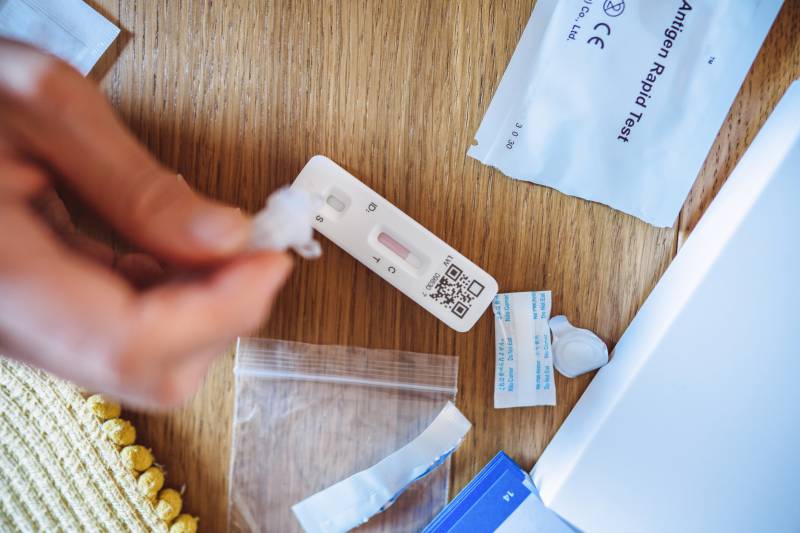Ben Cowling, an infectious diseases epidemiologist at the University of Hong Kong, also thinks seasonality and predictability are intertwined. He doesn’t think SARS-2 is there yet — but believes it’s on its way.
“At the moment I don’t think COVID is predictable but it is showing all the signs of becoming the fifth ‘human coronavirus’ along with OC43, NL63, 229E and HKU1,” he said in an email, ticking off the names of the four human coronaviruses that predated SARS-2.
Osterholm doesn’t agree, arguing that even if they follow a pattern, swells of COVID cases at different points in a year doesn’t equate to seasonality. Furthermore, he noted that the patterns we’ve seen to date have been largely tied to the emergence of new variants, like Beta, Delta, and Omicron, with large surges of infections when those versions of SARS-2 arrived in the spring, summer, and late autumn of 2021 respectively.
“It wasn’t tied to some kind of environmental conditions. And that’s what you often think of with seasonality,” Osterholm said.
It’s thought that with new viruses, the vast number of susceptible people allows a virus to override conditions that would constrain more established pathogens — kids being out of school, unfavorable atmospheric conditions — and transmit at a time when it normally should not be able to. Epidemiologists refer to this override capacity as the “force of infection.”
That, in turn, can impact the ability of other pathogens to transmit during their accustomed times, as was the case with COVID’s disruption of flu and RSV. “When a virus is in a pandemic mode, there are forces occurring that we just don’t understand,” Osterholm said.
There are a number of theories about why some viruses hew to a seasonal pattern. It’s thought an interplay of factors is at work. Some have been mapped out, others remain in the realm of the unexplained.
Some relate to human activities, like school, that bring together lots of children, who are expert at amplifying respiratory pathogens. Or holiday travel, potentially. Marion Koopmans, head of virology at Erasmus Medical Center in Rotterdam, the Netherlands, noted that a study published in Nature suggested that a surge in Covid cases in the summer of 2020 in Europe was likely due to people vacationing. “Without detailed analysis, I do not think we can rule out that what we see is ‘holiday traffic,’” Koopmans said, referring to the upticks of cases that have been reported every Northern Hemisphere summer since 2020.
Environmental factors are also thought to be at play. The lack of humidity in the air in cold winters affects the integrity of mucus membranes, and it allows viruses to survive better outside a human host. People in temperate climates crowd together indoors during the winter, often in settings where air quality is suboptimal. Interestingly, the defined flu seasons that the Northern and Southern Hemispheres experience are not observed in tropical climates, where transmission occurs on a more year-round basis, without the sharp peaks seen in temperate zones.
“There is now a much stronger evidence base on the impact of climate variables (esp. temperature, humidity) on pathogen survival and how this translates to an impact on transmission in the population,” Nick Grassly, an infectious diseases modeler at the school of public health at Imperial College London, said in an email. “The focus has been much more on environmental drivers (particularly humidity, temperature, rainfall, etc.) than human behavior.”
Grassly is one of the people who thinks SARS-2 seasonality is falling into place, noting that the Joint Committee on Vaccination and Immunisation — Britain’s equivalent of the Advisory Committee on Immunization Practices, an expert committee that helps the CDC craft vaccination use guidelines — is now recommending a targeted autumn COVID vaccination campaign for high-risk individuals, in anticipation of a surge of COVID activity this winter. A similar, though more broadly aimed campaign is planned for the United States.
“It remains possible that a new variant showing substantial immune escape could spread rapidly, even in summer, and so disrupt seasonal patterns and planning,” Grassly noted. “I think it is hard to estimate the probability that this happens, but it would deviate from the recent pattern of successive Omicron variants which have emerged without large increases in overall incidence.”
Stanley Perlman, a coronavirus expert whose bona fides in the field stretch back to the pre-SARS-1 days, agrees with Grassly.

